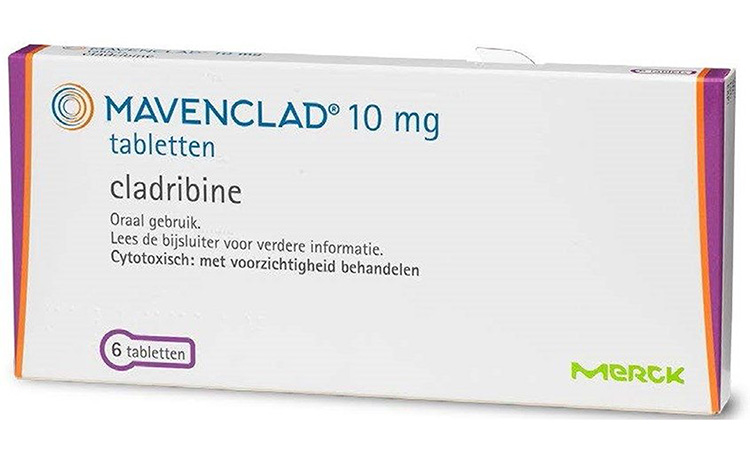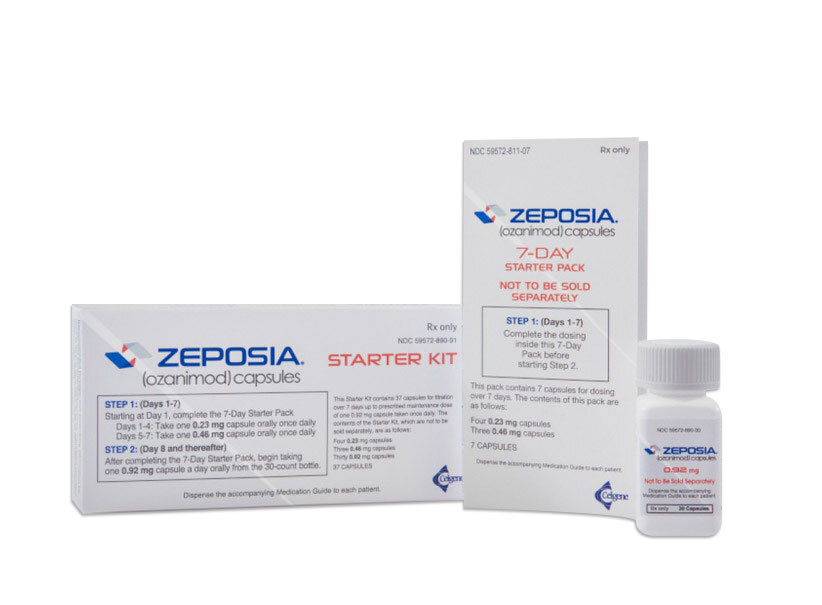Mavenclad (cladribine) vs Zeposia (ozanimod)
Mavenclad (cladribine) vs Zeposia (ozanimod)
Mavenclad (cladribine) is an oral medication approved for the treatment of relapsing forms of multiple sclerosis (MS), characterized by its dosing schedule that involves taking pills for only a few days per month and not requiring daily administration. Zeposia (ozanimod) is also an oral medication for relapsing MS, but it is taken daily and works by modulating the immune system through sphingosine 1-phosphate receptors. When deciding between the two, consideration should be given to factors such as the frequency of dosing, the mechanism of action, and the specific side effect profiles, as well as how each drug fits with the individual's lifestyle and treatment goals.
Difference between Mavenclad and Zeposia
| Metric | Mavenclad (cladribine) | Zeposia (ozanimod) |
|---|---|---|
| Generic name | Cladribine | Ozanimod |
| Indications | Multiple sclerosis | Multiple sclerosis, Ulcerative colitis |
| Mechanism of action | Purine analog; disrupts DNA synthesis and repair, leading to cell death | Sphingosine 1-phosphate receptor modulator; sequesters lymphocytes in lymph nodes, reducing the number of lymphocytes in peripheral blood |
| Brand names | Mavenclad | Zeposia |
| Administrative route | Oral | Oral |
| Side effects | Lymphopenia, leukopenia, infection, liver enzyme elevations | Upper respiratory infection, liver enzyme elevations, hypertension, bradycardia, macular edema |
| Contraindications | HIV infection, current malignancy, pregnancy | Recent myocardial infarction, unstable angina, stroke, Class II-IV heart failure, Mobitz type II second-degree or third-degree AV block or sick sinus syndrome unless the patient has a functioning pacemaker, history of hypersensitivity to ozanimod or any of its excipients |
| Drug class | Antineoplastic and immunomodulatory agent | Sphingosine 1-phosphate receptor modulator |
| Manufacturer | Merck | Bristol Myers Squibb |
Efficacy
Mavenclad (Cladribine) for Multiple Sclerosis
Mavenclad, with the active ingredient cladribine, is a medication approved for the treatment of certain forms of multiple sclerosis (MS), specifically relapsing-remitting MS (RRMS) and active secondary progressive MS (SPMS). Its efficacy has been demonstrated in clinical trials, such as the CLARITY study, which showed that Mavenclad significantly reduced the annualized relapse rate (ARR) in patients with RRMS compared to placebo. Additionally, the medication was found to reduce the risk of disability progression and the number of lesions as seen on MRI scans, which are important markers of disease activity in MS.
Zeposia (Ozanimod) for Multiple Sclerosis
Zeposia, containing the active substance ozanimod, is another oral medication approved for the treatment of relapsing forms of multiple sclerosis, including clinically isolated syndrome (CIS), RRMS, and active SPMS. The efficacy of Zeposia was established in the SUNBEAM and RADIANCE part B clinical trials. These studies demonstrated that Zeposia reduced the ARR in comparison to interferon beta-1a, another MS medication. Furthermore, Zeposia showed a reduction in the number of new or enlarging T2 MRI lesions and the number of gadolinium-enhancing lesions, which are indicative of active inflammation in the brain.
Comparative Efficacy in MS Treatment
When comparing Mavenclad and Zeposia, both drugs have shown efficacy in reducing relapse rates and slowing the progression of MS. However, direct comparative studies between the two medications are limited. The choice between these two treatments may depend on individual patient factors, such as disease activity, safety profile, route of administration, and patient preference. Both medications represent advances in the treatment of MS, offering patients more options to manage their disease with potentially improved outcomes.
Conclusion
In conclusion, both Mavenclad and Zeposia have been shown to be effective treatments for multiple sclerosis, providing benefits in reducing relapse rates and managing disease progression. Their use in clinical practice has expanded the arsenal of disease-modifying therapies available to patients with MS, allowing for more personalized treatment approaches. As with any medication, the decision to use Mavenclad or Zeposia should be made in consultation with a healthcare provider, taking into account the full clinical context of the patient's condition.
Regulatory Agency Approvals
Mavenclad
-
European Medical Agency (EMA), European Union

-
Food and Drug Administration (FDA), USA

-
Health Canada

-
Therapeutic Goods Administration (TGA), Australia

-
Medsafe (NZ)

Zeposia
-
European Medical Agency (EMA), European Union

-
Food and Drug Administration (FDA), USA

-
Health Canada

-
Therapeutic Goods Administration (TGA), Australia

Access Mavenclad or Zeposia today
If Mavenclad or Zeposia are not approved or available in your country (e.g. due to supply issues), you can access them via Everyone.org.
How it works

Make an enquiry
Choose the medicine you want to buy, answer a couple of questions, and upload your prescription to speed things up. We’ll get back to you within 24 hours.


Make an enquiry
Choose the medicine you want to buy, answer a couple of questions, and upload your prescription to speed things up. We’ll get back to you within 24 hours.


Breeze through the paperwork
We'll guide you through the required documents for importing unapproved medicine, ensuring you have all the necessary information.


Get a personalized quote
We’ll prepare a quote for you, including medicine costs and any shipping, administrative, or import fees that may apply.


Receive your medicine
Accept the quote and we’ll handle the rest - sourcing and safely delivering your medicine.

Some text on this page has been automatically generated. Speak to your physician before you start a new treatment or medication.
Let's talk
If you have any questions, call us or send us a message through WhatsApp or email:
Contact us




